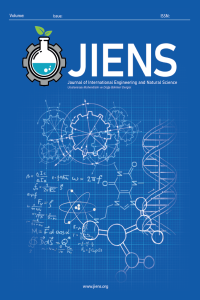Characterization of heating elements of different dimensions used in resistance welding of thermoplastic matrix composite materials
Characterization of heating elements of different dimensions used in resistance welding of thermoplastic matrix composite materials
Composite, Thermoplastic, Resistance welding, Composite welding,
___
- Benatar A, & Gutowski TG (1986) Method for fusion bonding thermoplastic composites. SAMPE Q.;(United States), 18(1).
- Stokes VK (1989) Joining methods for plastics and plastic composites: an overview. Polymer Engineering and Science, 29(19), 1310-1324.
- Rudolf R, Mitschang P, Neitzel M, and Rueckert C (1999) Welding of high-performance thermoplastic composites. Polymers and polymer composites 7(5), 309-315.
- Wedgewood AR, Hardy PE (1996) Induction welding of thermoset composite adherends using thermoplastic interlayers and susceptors. Technology Transfer in a Global Community, 850-861.
- Maguire DM (1989) Joining thermoplastic composites. SAMPE J., 25(1), 11-14.
- Xiao X, Hoa SV, Street KN (1994) Repair of thermoplastic resin composites bt fusion bonding. Compos Bond 1227, 30.
- Panneerselvam K, Aravindan S, Haq AN (2012) Study on resistance welding of glass fiber reinforced thermoplastic composites. Materials and Design 41, 453-459.
- Ageorges C, Ye L, Hou M (2000) Experimental investigation of the resistance welding for thermoplastic-matrix composites. Part I: heating element and heat transfer. Composites Science and Technology 60(7), 1027-1039.
- Dubé M, Hubert P, Gallet JN, Stavrov D, Bersee HE, Yousefpour A (2012) Metal mesh heating element size effect in resistance welding of thermoplastic composites. Journal of Composite Materials 46(8), 911-919.
- Colak ZS, Sonmez FO, Kalenderoglu V (2002) Process modeling and optimization of resistance welding for thermoplastic composites. Journal of Composite Materials 36(6), 721-744.
- Wei D. Gu Y, Zhu H, Li M, Wang S (2022) Influence of electrical heating metal mesh and power density on resistance welding of carbon fiber/PEEK composite. Polymers 14(13), 2563.
- Başlangıç: 2021
- Yayıncı: İdris Karagöz
Hakan ÖZTÜRKMEN, Yusuf USTA, Serkan TOROS, Fahrettin ÖZTÜRK
Eksik tahrikli döner ters sarkaç sisteminin geribeslemeli doğrusallaştırma tabanlı kademeli kontrolü
Andinet Kumella ETİCHA, Yasin AKGÜL, Ayben PAKOLPAKÇİL, Oğuz Kağan ÜNLÜ, Harun ÇUĞ, Ali KILIÇ
Investigation of effect of chestnut sawdust on mechanical properties of epoxy matrix composites
Seda BEKİN AÇAR, Mehmet Atilla TASDELEN, Bağdagül KARAAĞAÇ
PVDF nanofibers composite containing core-shell (ZnO@ZIF-8) for use in smart textile applications
Miladi ATIGHI, Moein JALALI, Mahdi HASANZADEH, Seyed Mansour BIDOKI
Development of reactive digital printing process for cellulosic fabrics
Halil İbrahim TURGUT, Aslı BALÇAK GİRGİN, Özlem YARAR
Nesibe YEŞİLDAĞ, Ömer Faruk ÜNSAL, Ramazan GÖMEÇ, Ayşe BEDELOĞLU
